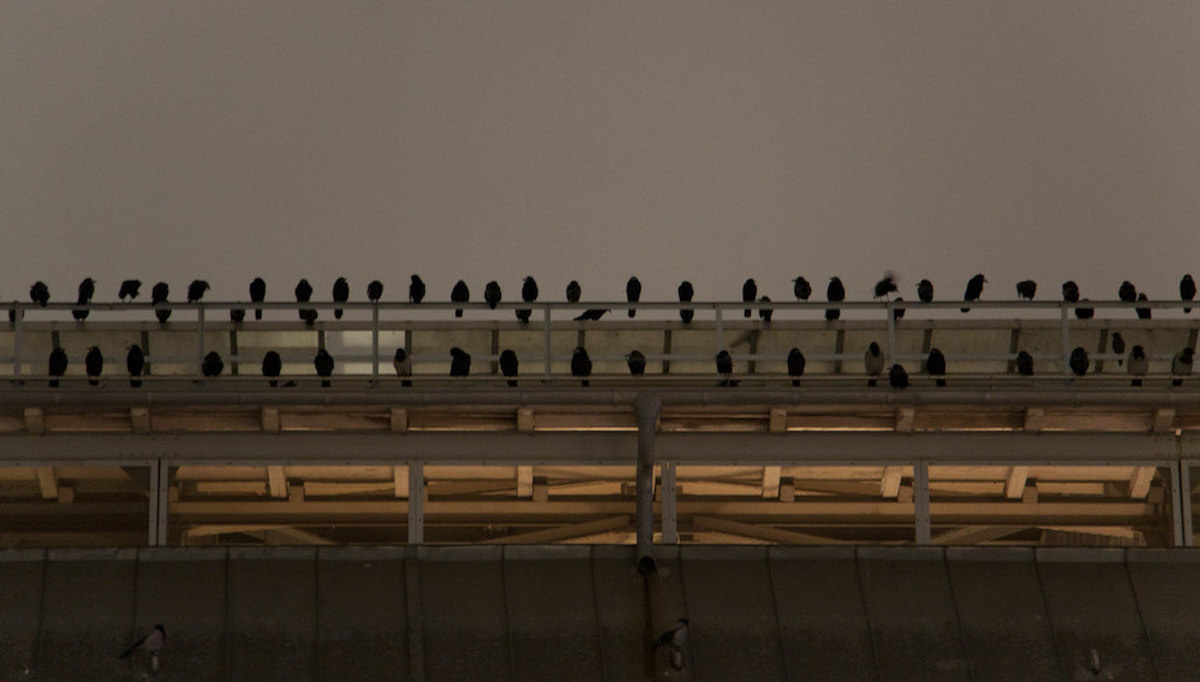
Watch short for this article (5 slides)
Weather Lore vs. Science: Which Folk Omens Actually Hold Water?
Since the dawn of awareness, humans have scanned the skies, felt the wind, and watched the natural world, seeking clues to predict the weather. Survival often depended on anticipating rain for crops, storms for sailors, or frost for travelers. This deep-seated need fostered a rich tapestry of folk weather omens – observations about animal behavior, atmospheric phenomena, and celestial signs passed down through generations. But in an age of Doppler radar, satellite imagery, and sophisticated computer models, do these ancient beliefs have any scientific validity, or are they merely captivating superstitions? Let's dissect some popular weather lore from around the globe, separating scientifically plausible observations from those largely debunked by modern meteorology.
The Necessity of Observation: Historical Context
Before barometers and broadcasts, understanding nature's signals was paramount. A farmer noticing changes in livestock behavior before a storm, or a sailor interpreting the color of the sunset, wasn't engaging in idle speculation; they were employing essential risk management strategies. These observations, repeated and refined over centuries, became ingrained cultural knowledge. While modern technology provides far greater accuracy and lead time, the human fascination with nature's predictive signs persists, partly out of tradition and partly because some observations genuinely reflect underlying atmospheric processes.
Scientifically Plausible Omens: Where Folklore Meets Meteorology
Some traditional weather signs have a basis in observable atmospheric science, even if the original explanation was different.
1. "Swallows Flying Low Means Rain is Nigh"
- The Omen: Observing swallows, swifts, or martins hunting insects close to the ground is often taken as a sign of impending rain.
- The Scientific Explanation: This correlation is generally sound. Changes in atmospheric conditions preceding rain, particularly falling barometric pressure and increasing humidity, affect insect behavior. Many flying insects tend to stay closer to the ground in these conditions, possibly due to changes in air density affecting their flight or increased moisture weighing down their wings. Birds like swallows, which feed on these insects mid-air, naturally follow their prey downwards. Therefore, low-flying swallows are reacting to conditions conducive to rain, making it a reasonably reliable short-term indicator. (Source: UK Met Office - Weather Lore Accuracy)
2. "Red Sky at Night, Sailor's Delight; Red Sky in Morning, Sailor's Warning"

A red sunset often indicates stable, dry air approaching from the west.
- The Omen: A vividly red sunset predicts fair weather the next day, while a red sunrise suggests approaching bad weather.
- The Scientific Explanation: This widely known saying has a solid basis in atmospheric optics and typical weather patterns, particularly in the mid-latitudes where weather systems often move from west to east.
- Red Sky at Night: Sunlight passing through the atmosphere at sunrise and sunset travels a longer path, scattering away most blue light (Rayleigh scattering). If the air to the west (where the sun is setting) is dry and contains dust or aerosol particles, these particles scatter the remaining longer wavelengths (reds and oranges) effectively, creating a red sunset. Dry, stable air often indicates high pressure, generally associated with fair weather. If this clear air is to the west, it's likely moving towards the observer.
- Red Sky in Morning: A red sunrise implies that dry, clear air (allowing red light scattering) has already passed to the east, and potentially moist air or clouds associated with an approaching low-pressure system or front are moving in from the west (where the sun is rising). This often precedes deteriorating weather conditions like rain or storms.
3. "Ring Around the Moon or Sun, Rain or Snow Soon to Come"
- The Omen: A visible halo or circle of light around the Moon or Sun suggests impending precipitation.
- The Scientific Explanation: This is often accurate. These halos, typically showing a radius of 22 degrees, are optical phenomena caused by the refraction (bending) and reflection of light through millions of tiny, hexagonal ice crystals suspended high in the atmosphere within thin, wispy cirrostratus clouds. Cirrostratus clouds frequently form ahead of advancing warm fronts or large low-pressure systems, which often bring widespread, steady precipitation. While not every halo is followed by a storm (sometimes the front weakens or changes track), their presence is a strong indicator that moisture is increasing at high altitudes, often a precursor to worsening weather within the next 24-48 hours. (Source: National Weather Service - Halos, Sundogs)
4. Persistent Autumn Fog Suggests Continued Mild Weather
- The Omen: Several consecutive days of dense morning fog in autumn, which burns off later in the day, indicates that significantly colder weather is not immediately imminent.
- The Scientific Explanation: This type of fog, often radiation fog, forms under specific conditions: clear skies overnight allow the ground to cool rapidly, chilling the moist air near the surface to its dew point. Light winds and stable atmospheric conditions (often associated with high pressure) prevent the fog from mixing with drier air above or being blown away, allowing it to persist, sometimes for days, until daytime heating becomes strong enough to evaporate it. The presence of such stable high pressure generally means that active weather systems (like strong cold fronts bringing sharp temperature drops and wind) are being kept at bay. Therefore, persistent radiation fog is indeed often indicative of a continuation of relatively stable, mild autumnal weather for the immediate future.
Myths and Misinterpretations: Omens Lacking Scientific Support
Many traditional beliefs, however, do not stand up to scientific scrutiny and are based on coincidence, misinterpretation, or factors unrelated to weather prediction.
1. "The Moon's Orientation Predicts Storms" (e.g., "Upright Moon Holds Water")
- The Omen: Beliefs exist that the tilt or orientation of the crescent Moon (appearing like an upright "cup" vs. lying on its "back") predicts dry or wet/stormy weather, respectively.
- The Scientific Debunking: The orientation of the crescent Moon in the sky is determined purely by celestial mechanics: the relative positions of the Sun, Earth, and Moon in their orbits, the tilt of Earth's axis, and the observer's latitude. The angle of the ecliptic (the Sun's apparent path) relative to the horizon changes throughout the year and varies with latitude, causing the crescent Moon's tilt to change predictably. This appearance has no causal connection whatsoever to terrestrial weather patterns. Observing the Moon's tilt provides zero predictive information about upcoming rain or storms. (Source: EarthSky - Wet Moon Explanation)
2. "Cat Hiding Its Nose Means Cold is Coming"
- The Omen: If a cat sleeps curled tightly, tucking its nose under a paw or tail, colder weather is supposedly on the way.
- The Scientific Critique: While animals often react to current temperatures, this specific behavior is primarily linked to the cat's immediate comfort and thermoregulation. Cats curl up tightly to conserve body heat and feel secure. They might tuck their nose simply because it's a comfortable sleeping position or if they feel a draft, regardless of whether a major outdoor cold snap is imminent. There are no credible scientific studies demonstrating a predictive link between this specific feline posture and future weather changes.
3. "Crows Gathering Noisily Foretell Storms or Disaster"

Crows gather for various social and environmental reasons unrelated to predicting storms.
- The Omen: Large, noisy gatherings of crows, especially on rooftops or bare trees, are sometimes interpreted as harbingers of bad weather or even misfortune.
- The Scientific Reality: Crows are highly social and intelligent birds (corvids). They congregate for numerous reasons totally unrelated to weather prediction: communal roosting (especially in winter for warmth and safety), foraging opportunities, defending territory, mobbing predators, or social interactions. While they might become more active or vocal in response to immediate changes like dropping pressure or approaching storm fronts (like many animals), a large gathering itself is not a reliable predictor of *future* severe weather. Their behavior is driven by complex social and ecological factors, not meteorological forecasting.
4. "Groundhog Day Predicts Winter's Duration"
- The Omen: This famous North American tradition, centered on February 2nd, holds that if a groundhog emerges from its burrow and sees its shadow (due to sunny conditions), it will be frightened back inside, signifying six more weeks of winter. If it does not see its shadow (cloudy day), spring will arrive early.
- The Scientific Assessment: This popular piece of folklore has no basis in meteorological science. A groundhog's emergence is related to its natural hibernation cycle, influenced by factors like ground temperature and internal biological cues. Whether it's sunny or cloudy on a single day in early February provides absolutely no reliable information about weather patterns over the subsequent six weeks. Numerous analyses by meteorological organizations have consistently shown the groundhog's "predictions" (whether Punxsutawney Phil or others) to have an accuracy rate roughly equivalent to chance – around 40-50%. It's a fun tradition, but not a weather forecast. (Source: NOAA/NCEI - Groundhog Day Accuracy)
Conclusion: Blending Observation with Science
Folk weather omens offer a fascinating glimpse into humanity's long history of observing and interpreting the natural world. Some sayings, like those related to red skies, lunar halos, or low-flying swallows, capture genuine correlations based on atmospheric physics and ecological responses, providing reasonably reliable short-term clues, especially when combined with other observations.
However, many other traditional beliefs lack scientific foundation, stemming from coincidence, misinterpretation of animal behavior, or purely astronomical phenomena unrelated to weather. While these myths hold cultural interest, relying on them for practical forecasting is unwise in the modern era.
Today, the rigorous methods of meteorological science – utilizing vast networks of sensors, satellite data, radar systems, and powerful computer models – provide far more accurate and reliable weather predictions. Yet, appreciating the scientifically valid kernels within some folk traditions reminds us of the value of careful observation and the intricate connections within our natural environment. The best approach often involves respecting both the power of modern science and the enduring human practice of looking closely at the world around us.